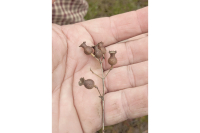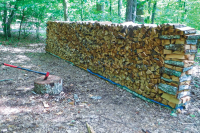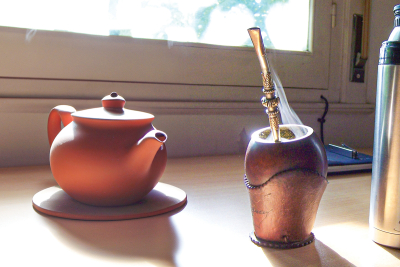Beauty of the cardinal flower
The fall wildflower season has arrived. Along roadsides and woodland edges some of our more robust native plants are now coming into full bloom. By “robust” I mean high growing and stout. These would include wild lettuce, common mullein, Joe Pye weed, green-headed coneflower, bull thistle, various species of woodland sunflowers, crown beard, boneset, white snakeroot, New York ironweed, cardinal flower, and others.
Hollyhocks and reminders of the past
Sometimes it’s difficult to draw the line between the natural and cultivated plant worlds. As cultivated plants escape they often establish themselves as part of our regional flora. My wife, Elizabeth, and I are particularly fond of those old-fashioned garden flowers that persist about abandoned homesteads. Sometimes the only evidence of former habitation will be the mute testimony offered by the gray foundation stones of the cabin and a scattered array of old-fashioned garden flowers.
It’s not about the trees at all
I really don’t think we are as stupid as they think we are. Developers of commercial retail shopping centers have an unfounded hang up about planting trees in front of, or in the parking lot of, shopping centers being developed. Or in the case of the Ingles on Russ Avenue in Waynesville, incorporating the use of trees into the plans for a 16,000-square-foot proposed expansion.
Weed or wildflower?
The status of a given plant as either a “noxious weed” or a “lovely wildflower” is pretty much a matter determined in the mind’s eye of the beholder. Several weeks ago, in a column headed “Persecution of the Dandelion,” I defended that plant against the plethora of TV lawn care commercials calling for its eradication. I was startled by the number of emails I received that supported my sentiments.
The mountain rhodo show
Rhododendrons are a part of the heath family (Ericaceae), which includes such diverse members in regard to size and habitat as pipsissewa, trailing arbutus, mountain laurel, doghobble, and sourwood. There are three evergreen rhododendron species in the southern mountains: rosebay (Rhododendron maximum), Catawba or purple (R. catawbienese), and Carolina (R. minus).
From dogwood to blackberry winter
Frost warnings and advisories across the Blue Ridge tonight (May 18) officially announce this year’s “blackberry winter.” It is coming about six weeks after “dogwood winter” and will be a much more gentle reminder of Ma Nature’s cold side. The reports I’ve seen are calling for the possibility of frost in the mountain valleys.
Flame on
Flame azalea is one of our most magnificent common shrubs here in the Smokies region. From late spring into early summer its flowers are produced in profusion on low growing, twiggy shrubs that are often as wide as they are high. The funnel-shaped blossoms that seemingly light up woodland glades range in color from red to yellow to orange and all shades in between.
Persecution of the dandelion
It seems that every lawn care commercial on TV or radio these days is aimed at touting a product which eradicates that obnoxious “weed” known as dandelion. What’s wrong with a few dandelions? Does everyone want a yard that looks like the putting greens at Augusta National? I like dandelions.
Spring wonders: Great Smoky Mountains Institute at Tremont makes nature hands-on
By Sarah Kucharski • Staff Writer
Cameron Farlow, an intern at the Great Smoky Mountains National Park’s Oconaluftee Visitors Center, reaches down to pluck a meandering millipede from the moist, dirt bank along the side of the trail as we hike up the ridgeline.
The oil nut’s curious little green fruits
For me, the fall season is one of the most invigorating times to get out in the woods and prowl around. Many of the most beautiful wildflowers found in the Blue Ridge, especially the lobelias and gentians, are then coming into their own.









